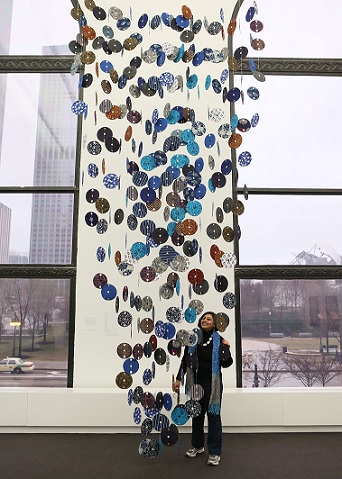
My work focuses on Gandhi’s ideology of nation building for creating moral and peaceful societies, relevant for 21st century, connecting past with the present.
My work as an artist is centred on historical iconographic elements within the cultural context of Indian history. I explore and construct the hermeneutics of period histories, its contemporary representation of socio-political enquiry within my art practice.
With my academic background in English literature, formal training in fashion designing and clothing technology, my artworks interconnect art, design and critical theories. I collaborate with the 9th or 10th generation of Ajrakh artisans who migrated from Sindh and Balluchistan in 1600 CE but still carry on with ancient textile traditions of printing and dyeing in Bhuj, Gujarat.
Invoking such traditions, I bring together khadi as a fabric, Ajrakh textile traditions and skill of the craftspeople giving my own interpretation in a visual form. Working with various media and excavating from history, my art celebrates the subaltern.
Image details: Site-specific Installation,
Indigo Narratives 2009-2014, 30 feet high, 300 Ajrakh printed buttons, 8 inches diameter
Installation shot at Chicago Cultural Centre IL, USA, 2013
